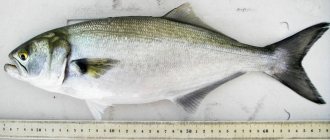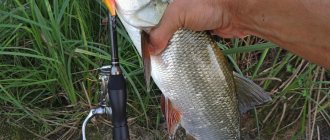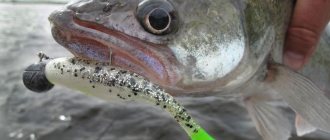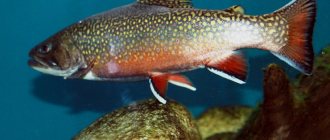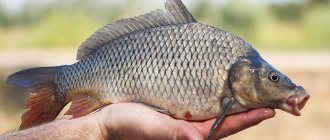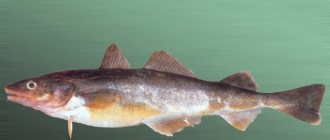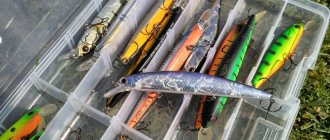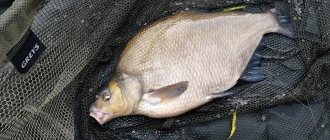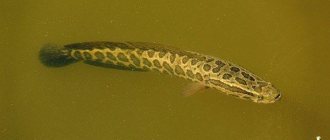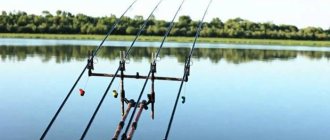Among the fishing gear used today for deep fishing, there are those that, despite their ancient age, continue to be actively used. One of them is a tyrant. This is a simple, but quite catchy tackle, used by anglers to catch a wide variety of fish. By the way, it has another, more consonant name - “samolov”, which explains the fishing method.
In this article we will talk about what this fishing device is, and also look at how to make a tyrant with your own hands. In addition, we will tell you what kind of fish you can catch with it and how it is done.
The essence of the tackle
In essence, a tyrant is a bottom tackle consisting of a main and additional fishing line with short and elastic leashes attached to it with hooks and a weight at the end. It is used for fishing at great depths from a boat. The classic design of the gear does not involve the use of a fishing rod. The fishing line with the equipment is wound on a reel, with the help of which the equipment is controlled. But some fishermen still use the rod for greater convenience when casting and retrieving.
Design and principle of operation of a tyrant
A standard fishing tyrant consists of the following set of components:
- reel or rod;
- main scaffolding (shvorka);
- additional scaffolding (rate);
- leashes;
- sinkers;
- hooks
How is fishing done? You can fish with a tyrant either with a reel, held permanently in your hand, or with a rod. The rod is a hard, short blank (1.5-2.5 m), equipped with a reel. You can use any reel, as long as it is reliable. Today you can buy a tyrant ready-made in any fishing store.
What kind of fish can you catch with a tyrant?
The tyrant is an exclusively predatory tackle, but sometimes peaceful species react to it with pleasure. It is designed for catching schooling fish both in the sea and in fresh water bodies. Similar fishing gear is used for fishing:
- mackerel;
- mackerel;
- Black Sea herring;
- Don herring;
- Black Sea and Azov goby;
- smelt;
- saberfish, etc.
Often, when sea fishing, a bluefish, bonito, or even a katran can be caught on a hook. Naturally, different equipment and different bait are used for each type of fish.
Main line and stake
Shvorka is a strong monofilament thread, nylon or nylon cord. Its length is determined by the depth of the fishing spot, but be that as it may, it is not worth constructing gear shorter than 50 m. The thickness of the main line depends on the transparency of the water and the expected catch. Typically, these fishing tackles are equipped with a fishing line or cord no thinner than 0.4-0.6 mm.
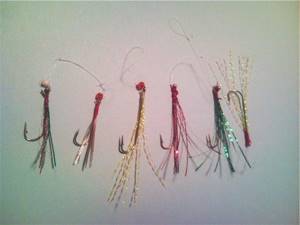
The bet is a monofilament thread with a thickness of 0.3-0.35 mm and a length of 4-6 m.
Leashes
For leashes, a fishing line with a thickness of 0.25-0.3 mm is used. Their length is usually from 2 to 5 cm. Longer ones will tangle the line. The number of leashes may vary. It all depends on what kind of fish you are going to hunt. For horse mackerel, leashes are knitted at a distance of 25-30 cm, for fishing for mackerel - 60 cm. Based on the length of the additional fishing line (4-6 m), there can be from 10 to 20 pieces. Experienced fishermen have at their disposal several different stakes with leashes and hooks, designed for different fish: horse mackerel, mackerel, goby, etc.
Fishing with a tyrant
Fishing with a tyrant - although the name is not very euphonious, this original tackle has been used for fishing for centuries. Who, when and why christened him this way is, of course, impossible to say. Most likely, the name, as often happens, reflects the essence of the gear and the method of fishing: the fish are simply deceived, fooled, offering it (and not without success) instead of edible bait some feathers, tufts of wool, threads, or even nothing at all hooks But be that as it may, the name, invented by a cheerful fisherman, took root and became firmly established in the fishing lexicon.
Samodur is a simple and easy-to-catch tackle, therefore, as soon as the opportunity arose, it was used first for fishing in estuaries, and then on rivers. The fact is that the river tyrant differs from its marine prototype and requires a spinning rod and reel, although the idea of the gear itself has remained unchanged.
Fishing with a tyrant in rivers is fundamentally no different from fishing with spoons, and in most cases it simply complements the spoon, while remaining an independent tackle. the device of any tyrant is very simple, and its various variations differ from each other only in the baits used, the choice of which depends mainly on local traditions, the type of fish, and to a lesser extent on the fishing conditions.
The main working part of the tyrant is the STAVKA, which is a long (100-150 cm) piece of fishing line on which all kinds of baits are attached with very short (1.5-3.0 cm) leashes. At one end, the stake is connected to the main, thicker fishing line using a swivel or carabiner, and at the other end, either a spinner, or a Devon, or simply a sinker is attached.
The distance between short leashes can be any, but not less than their triple length, otherwise they will cling to each other when casting. The lowest leash is installed approximately 20-30 cm above the spoon.
Also interesting: Ruff
The number of leashes with bait may vary, but not too large. Three or five baits are enough, the brighter or more massive they are. the less of them should be set at the rate.
The technique of fishing with a tyrant is not complicated and is no different from the simplest methods of using spinners.
You can fish both at the surface and at the bottom. In the latter case, in order to avoid snagging, it is advisable to replace the lure with a sinker, and equip additional baits with floating heads or put small foam balls on short leashes.

What do they catch for tyrants?
They catch all kinds of predatory fish and sabrefish with tyrants, but often the prey of a spinning rod turns out to be chub, bream or ide. If, instead of a spinner, you equip the stake with a floating wobbler, lengthen the stake itself to two meters, equipping it with thin leashes (5 to 10 cm long) with flies, then at the slowest retrieve rate you can catch grayling, trout, and other salmon fish.
Tyrant fishing. But most often, a tyrant with a certain device called a “brush” or “beard” is used for fishing asps, pike perches and perches. Asps are usually caught at the very surface of the water, perches - in the middle layers and closer to the bottom, and pike perch - only from the bottom.
In all cases, the tackle looks the same: a stake 70-150 cm long is equipped with three to five short leashes of the same diameter as the stake and a length of 3 to 5 cm.
Each short leash ends with a triple hook (No. 4-6), disguised with a not very voluminous tuft of wool, also 3 to 5 cm long. The color of the wool can be any - black, gray, white or red, but it is better if each hook is covered hairs of different colors. If the fish more often grabs, for example, a black brush, then all the rest should be replaced with black or dark gray beards.
Also interesting: Catching silver bream on a feeder
When fishing for tyrant asps, a heavy and narrow oscillating spoon is attached to the stake, but metal devons are more suitable for this. They throw the tackle to where the “fight” of the predator is noticed, and at the moment the spoon comes into contact with the water, they begin a fast and uniform retrieve.
Pike perch are caught differently. The spoon is led slowly along the very bottom, now accelerating, now slowing down the reeling of the fishing line, lowering and raising the rod. The best spinner is considered to be an ordinary metal or lead “three-edge”.
If the bottom is cluttered, then the tee is removed from the spoon, and they try to guide the tackle in such a way that the line does not drag along the ground, but is always at an angle of 30-45 degrees to the bottom plane. In this case, the last beard (closest to the spoon) is removed. To catch perch, usually no additional devices or tricks are required.
When fishing with tyrants, they often grab baits intended for pike perch or asp. Pike, ide, chub and catfish often take the beard. And a spinning player should always be prepared for such pleasant surprises.
Category: Fishing
Lures used when fishing for tyrants
Small bird feathers are most often used as bait. It is better if they are of bright colors: rooster, duck, guinea fowl, jay feathers, etc. In addition to them or together with them, bright woolen threads or floss can be used. The composition is selected according to the principle of color contrast: black with white or red, yellow with purple, white, white with blue, etc.
Not everyone can equip a hook correctly. This requires some skill.
After the composition has been selected, the rough parts of the feathers are cut off so that they are 15-20 mm longer than the shank of the hook. Feathers are tied using the same woolen threads or thin fishing line (0.1-0.15 mm), using fishing knots, for example “clinch”. To prevent the structure from stretching, it can be secured with waterproof glue.
Tackle tyrant
A stake, also called a post, is a 2-meter piece of fishing line with a diameter of 0.25–0.35 mm, to which 5–10 short (3–10 cm) leashes with hooks are tied.
The distance between the leashes is at least 15–25 cm, and they should look in different directions, like tree branches, and the hooks should be positioned with the tip up.
For small fish take hooks No. 5–6, for large fish No. 7–10. In some cases, it is more convenient to fish with small doubles and trebles.
On the back side of the forearm, a colorful bird feather is tied to a hook (feathers from different birds are used in different regions) or a colored thread (red, yellow, green, crimson or gray, and each hook must have a thread of the same color).
Loops are made at both ends of the stake at a distance of 10 cm from the hooks. A removable sinker weighing 50–80 g is attached to the lower loop, and the main fishing line is attached to the upper loop using a swivel and a carabiner.
When fishing with tyrant tackle in the dark, the length of the stake is shortened, reducing the distance between the leashes to 15 cm. Experienced fishermen always have a supply of stakes with fishing line of different lengths and diameters and hook sizes.
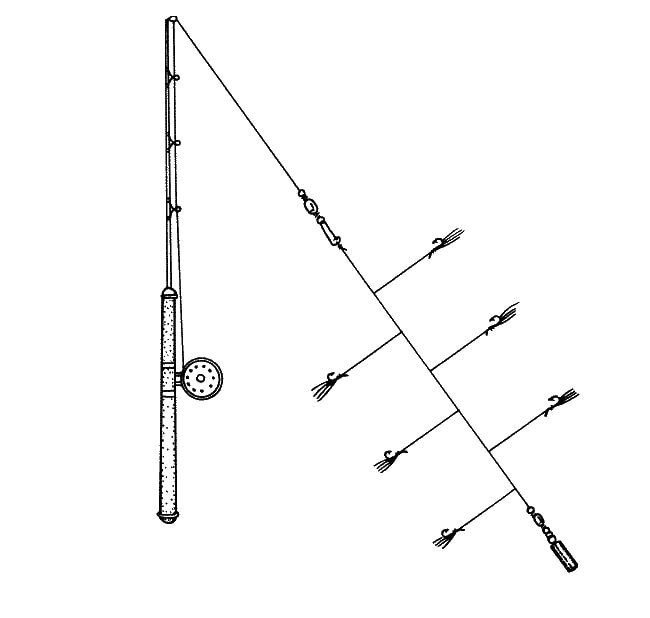
Sometimes, when decorating a hook, instead of feathers and threads, pieces of white cambric, strips of foil or polyethylene are used, and often bare but brightly shiny hooks are attractive to fish.
Tyrants for horse mackerel: design features
In addition to feathers and threads, you can bait the hooks with worms, maggots, and the meat of mussels and snails. It all depends on what kind of fish you will be hunting.
Horse mackerel is the most popular fish that is caught using a tyrant. It is quite common, and if you quickly find a school of fish, the catch can be simply magnificent. Let's look at how to knit a tyrant for horse mackerel with your own hands, and what materials are best to use for this.
Let's start with the rod. This is exactly the case when it is truly necessary. With an intense bite, you will simply get tired of reeling in the line with the reel. And it’s easier to find a school by making some kind of cast. The length of the rod is 1.5-2 m. The action is extremely rigid. The reel is a spinning reel with a size of 2500-3000. It is advisable that the rod have 2 brass guide rings (the first from the reel and the middle one).
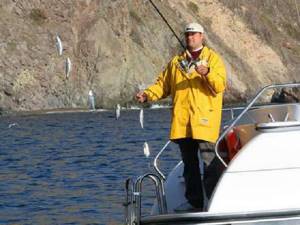
Hooks - No. 8, no more. We select the load that matches the fishing conditions. The main line is 0.4 mm, 50 m long. The line is 4 meters, 0.35 mm thick. Number of leashes – 10-12 pcs., length – 2 cm, fishing line – 0.25 mm. Many fishermen put beads or lurex beads on their leashes. It is believed that such a visual lure helps to better attract horse mackerel.
Types of tyrants
Tackle with this name is fishing equipment, which consists of a fishing line, cord or nylon core about 50 m long, wound on a reel. More reliable is the tyrant who is mounted on a 1 meter long rod with guide rings and a spinning reel. A leader equipped with a weight and a set of hooks is attached to the main line; it is called a stake. With the help of a simple device, you can catch several trophies at once in one cast. Use it both at a specific place and on the go. The primary purpose of the tyrant was to catch sea predatory fish, but it is also practiced for the peaceful inhabitants of the reservoir.
Common differences between the options for this equipment are:
- length of undergrowth and leashes attached to them;
- sizes of hooks and their number;
- color of the bait used;
- weight and shape of the sinker;
- methods of attaching feathers.
Based on these components, there are two most commonly used types: “noticeable” tyrants and “playing” ones. The first feathers on the hooks are much larger and have shorter undergrowth. Such models perform well on bright autumn days, when the water is much darker than in the warm season. The second ones have smaller feathers and a long undergrowth. They serve well in clear water in spring and summer at dawn and before sunset, as well as in moments of complete calm.
To learn more:
Is herring a sea or river fish?
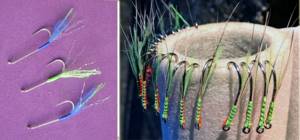
Technique for fishing with a tyrant from a boat
Let's look at how tyrant fishing is done from a boat. It is better if you have an assistant who can steer the boat. When you go to the fishing spot, you need to prepare your tackle or gear. When they are ready, we hold the rod or reel with one hand, and with the other we begin to unwind them, slowly lowering them into the water. When the sinker reaches the bottom, we tighten the main line, leaving it in tension. If fishing is carried out with several gears, we unwind them all in turn.
At the first strike, we hook and continue fishing without taking the gear out of the water, because we have a lot of hooks. Only after the biting has stopped can the tyrant be pulled out. To prevent the fish from getting away, the rod can be put aside and the fishing line can be reeled in with your hands, sorting through it and removing the caught fish.
As you can see, the tyrant is a very simple tackle to make and use; even a beginner can mount it and handle it. With the right bait and the presence of fish in the pond with it, you will never be left without a catch.
Operating technique
The most exciting and interesting fishing for tyrants will be using a boat or boat, especially in the morning and evening hours. At this time of day, fish gather at a depth of 20-35 m throughout the entire water area, and during the day - in the range from 35 to 55 m and near underwater gorges.
To learn more:
Fishing for pike with a circle in autumn
It is better to go sea fishing together. Before casting the gear, you need to study the direction of the current and wind: if it is from the shore, first fish shallow areas, and from the sea, start from the depths.
Having decided on the place of fishing, the vehicle is “anchored”, the lead weight is released and, unhooking the hooks one by one, the stake is immersed. After waiting until it is in the water, the tackle is taken by the rod or handle, and the main line, under the influence of gravity, begins to quickly unwind on its own. To insure against a sharp or unexpected bite, the handle is tied to the side (the rod is held in the hands).
The fishing technique consists of periodically twitching the tackle. The moment of bite is transmitted along the line with weak or strong jerks.
After the first twitch, there is no need to rush to remove the cord from the water; on the contrary, it is necessary to lower it even deeper. In this case, more than one fish will be able to catch on the free hooks.
They lift the tackle up slowly and straight to the bottom of the boat. By selecting the main line, you can see all the caught fish in the water. It is removed from the hooks one by one, but the bet itself is not completely removed. Also, do not hold the catch suspended, as it may come loose. Having removed all the fish, the undergrowth is again lowered into the water, after which the required length of the main line will also sink to the bottom.
